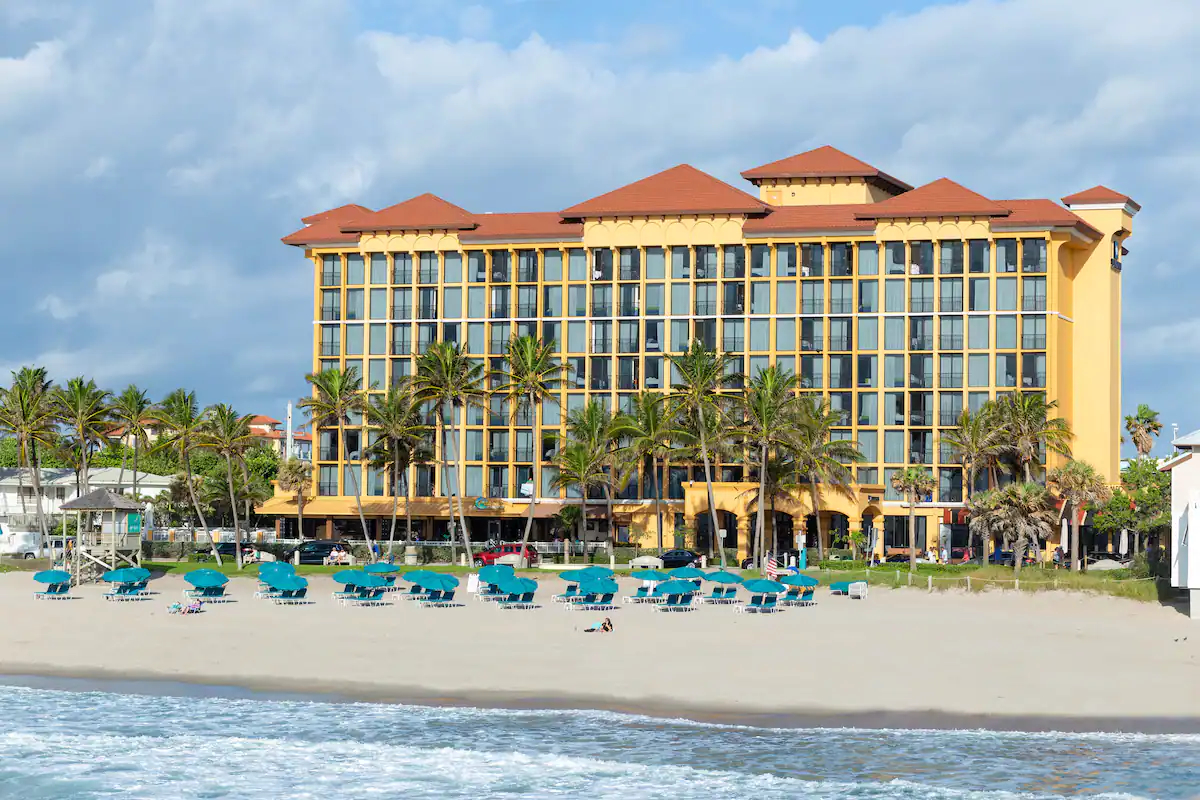Wyndham to Add More Properties at a Faster Pace Under New Plan

Skift Take
Wyndham Hotels & Resorts isn't the same company it was before the pandemic. It's now fully focused on franchising select-service properties. That clarity will enable the company to grow its property count worldwide more quickly, executives believe.
This year, the company divested two hotels it had owned and stopped offering to manage properties on behalf of owners. The strategy change led to one-time adjustments. The company reported a fall in revenue to $407 million compared to $463 million in the same quarter a year earlier. It generated net income of $101 million, down $2 million from a year earlier.
Despite the shortfall in the quarter, Wyndham raised its full-year outlook for revenue and profit. It forecasted it would generate an adjusted net income of between $349 million and $354 million. That would be about $23 million higher than it had previously predicted.
The Parsippany, New Jersey-based company — whose 23 brands include LaQuinta, Ramada, Days Inn, and Super 8 — generates the majority of its revenue domestically. In the third quarter, its brands delivered a company record in the U.S. for revenue per available room, a key industry metric.
Extended stay properties, which Wyndham has a significant share in, performed the best.
"Extended stay demand is just off the charts," said president and CEO Geoffrey Ballotti. "I mean we're seeing a 13-point year-to-date delta between what extended today is running occupancy-wise and what the rest of the industry is [doing]."
Growing Footprint Faster
More than most of its lodging competitors, Wyndham has tuned up its machine for adding properties, with nine consecutive quarters of sequential pipeline growth. In the third quarter, Wyndham extended its development pipeline by 10 percent to a company record of 212,000 rooms across more than 1,600 hotels. In the U.S. and internationally the company opened more rooms than it did in the comparable pre-pandemic period in 2019.
"Our pipeline has never been healthier, and it was just explosive, obviously, in the quarter year-over-year," Ballotti said during an earnings call with investors.
Faster onboarding matters because Wyndham is fully focused on franchising, unlike some of its rivals. Under franchising, each new property pays a sign up fee and recurring fees. So network growth sends a lot of cash directly to the company's bottom line and is a predictor of the company's overall financial expansion.
"There's been a fear that new construction is slowing," Ballotti said. "We're certainly not seeing that from the demand in our new construction prototype brands."
In the U.S., the company launched a potential expansion story this year by debuting an economy extended-stay brand, provisionally named Echo. In August, Sandpiper Hospitality filed plans to build what will likely be the first Echo hotel in western Henrico, Virginia. In the third quarter, Wyndham awarded another 48 construction contracts, bringing the total number of contracts awarded to 120 hotels this year — 20 ahead of its goal set in March.
"We've reached multiunit development agreements with 7 of the nation's preeminent extended stay developers, and that's providing a runway over the next 5 years for the brand," Ballotti said.
In Europe, Wyndham last month bought Vienna House — a group of 40 hotels in Europe — in a $44 million (€44 million) purchase from Berlin-based HR Group. Wyndham executives learned about the off-market opportunity through one of its franchisees. They believe similar deals could similarly come their way.
In China, the hotel industry has faced headwinds because of pandemic-related restrictions on travel and a local property financing market that has been imploding. Yet its development team in China awarded the same number of contracts year-to-date through the end of the third quarter as they did in the same period in 2019. This year it has averaged, quarter in, quarter out, an 8 percent net room growth in franchising despite the challenges.
Wyndham declined to give guidance on its rate of net room growth beyond a range of 2 percent to 4 percent.
Driving Direct Bookings
One way for hoteliers to squeeze out more margin is to drive more bookings through its website, mobile app, and other direct channels.
"Our wyndham.com channels hit an all-time record of contribution, while third-party online travel agency channels as a percentage of total bookings remain below 2019 levels," Ballotti said.
A loyalty program is another tool for driving direct bookings as members of loyalty programs are more likely to book direct than nonmembers. In the third quarter, Wyndham's loyalty program contributed more than 500 additional basis points of nightly occupancy compared to pre-pandemic. It's contributing more to direct bookings now as a share of the distribution mix than it was before the pandemic.
Ballotti said he expected the company's loyalty program to "hit the 100 million member mark at some point this year, up about 25 percent in size from 2019.
Wyndham said it drives about one out of every two check-ins domestically via its direct channels.





